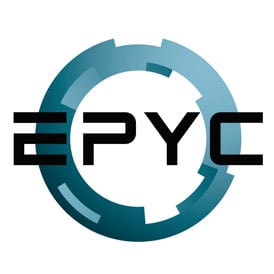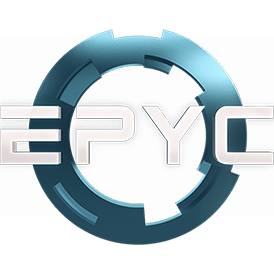AMD EPYC 7713 vs Qualcomm Snapdragon 850
Last updated:
CPU comparison with benchmarks

|

|
|
| AMD EPYC 7713 | Qualcomm Snapdragon 850 | |
CPU comparisonAMD EPYC 7713 or Qualcomm Snapdragon 850 - which processor is faster? In this comparison we look at the differences and analyze which of these two CPUs is better. We compare the technical data and benchmark results.
The AMD EPYC 7713 has 64 cores with 128 threads and clocks with a maximum frequency of 3.68 GHz. Up to 4096 GB of memory is supported in 8 memory channels. The AMD EPYC 7713 was released in Q1/2021. The Qualcomm Snapdragon 850 has 8 cores with 8 threads and clocks with a maximum frequency of 2.95 GHz. The CPU supports up to 8 GB of memory in 4 memory channels. The Qualcomm Snapdragon 850 was released in Q3/2018. |
||
| AMD EPYC (129) | Family | Qualcomm Snapdragon (102) |
| AMD EPYC 7003 (29) | CPU group | Qualcomm Snapdragon 845/850 (2) |
| 3 | Generation | 5 |
| Milan (Zen 3) | Architecture | Kryo 385 |
| Desktop / Server | Segment | Mobile |
| -- | Predecessor | -- |
| -- | Successor | -- |
|
|
||
CPU Cores and Base FrequencyThe AMD EPYC 7713 has 64 CPU cores and can calculate 128 threads in parallel. The clock frequency of the AMD EPYC 7713 is 2.00 GHz (3.68 GHz) while the Qualcomm Snapdragon 850 has 8 CPU cores and 8 threads can calculate simultaneously. The clock frequency of the Qualcomm Snapdragon 850 is at 2.95 GHz. |
||
| AMD EPYC 7713 | Characteristic | Qualcomm Snapdragon 850 |
| 64 | Cores | 8 |
| 128 | Threads | 8 |
| normal | Core architecture | hybrid (big.LITTLE) |
| Yes | Hyperthreading | No |
| No | Overclocking ? | No |
| 2.00 GHz (3.68 GHz) 64x Zen 3 |
A-Core | 2.95 GHz 4x Kryo 385 Gold |
| -- | B-Core | 1.80 GHz 4x Kryo 385 Silver |
Internal GraphicsThe AMD EPYC 7713 or Qualcomm Snapdragon 850 has integrated graphics, called iGPU for short. The iGPU uses the system's main memory as graphics memory and sits on the processor's die. |
||
| no iGPU | GPU | Qualcomm Adreno 630 |
| GPU frequency | 0.70 GHz | |
| -- | GPU (Turbo) | -- |
| -- | GPU Generation | 4 |
| Technology | 10 nm | |
| Max. displays | 2 | |
| -- | Compute units | -- |
| -- | Shader | 256 |
| No | Hardware Raytracing | No |
| No | Frame Generation | No |
| -- | Max. GPU Memory | 8 GB |
| -- | DirectX Version | 11 |
Hardware codec supportA photo or video codec that is accelerated in hardware can greatly accelerate the working speed of a processor and extend the battery life of notebooks or smartphones when playing videos. |
||
| no iGPU | GPU | Qualcomm Adreno 630 |
| No | Codec h265 / HEVC (8 bit) | Decode |
| No | Codec h265 / HEVC (10 bit) | Decode |
| No | Codec h264 | Decode / Encode |
| No | Codec VP9 | Decode |
| No | Codec VP8 | Decode |
| No | Codec AV1 | No |
| No | Codec AVC | Decode |
| No | Codec VC-1 | Decode |
| No | Codec JPEG | Decode / Encode |
Memory & PCIeThe AMD EPYC 7713 can use up to 4096 GB of memory in 8 memory channels. The maximum memory bandwidth is 204.8 GB/s. The Qualcomm Snapdragon 850 supports up to 8 GB of memory in 4 memory channels and achieves a memory bandwidth of up to 29.8 GB/s. |
||
| AMD EPYC 7713 | Characteristic | Qualcomm Snapdragon 850 |
| DDR4-3200 | Memory | LPDDR4X-3733 |
| 4096 GB | Max. Memory | 8 GB |
| 8 (Octa Channel) | Memory channels | 4 (Quad Channel) |
| 204.8 GB/s | Max. Bandwidth | 29.8 GB/s |
| Yes | ECC | No |
| -- | L2 Cache | 1.50 MB |
| 256.00 MB | L3 Cache | 2.00 MB |
| 4.0 | PCIe version | -- |
| 128 | PCIe lanes | -- |
| 252.0 GB/s | PCIe Bandwidth | -- |
Thermal ManagementThe thermal design power (TDP for short) of the AMD EPYC 7713 is 225 W, while the Qualcomm Snapdragon 850 has a TDP of --. The TDP specifies the necessary cooling solution that is required to cool the processor sufficiently. |
||
| AMD EPYC 7713 | Characteristic | Qualcomm Snapdragon 850 |
| 225 W | TDP (PL1 / PBP) | -- |
| -- | TDP (PL2) | -- |
| 240 W | TDP up | -- |
| -- | TDP down | -- |
| -- | Tjunction max. | -- |
Technical detailsThe AMD EPYC 7713 is manufactured in 7 nm and has 256.00 MB cache. The Qualcomm Snapdragon 850 is manufactured in 10 nm and has a 3.50 MB cache. |
||
| AMD EPYC 7713 | Characteristic | Qualcomm Snapdragon 850 |
| 7 nm | Technology | 10 nm |
| Chiplet | Chip design | Chiplet |
| x86-64 (64 bit) | Instruction set (ISA) | Armv8-A (64 bit) |
| SSE4a, SSE4.1, SSE4.2, AVX2, FMA3 | ISA extensions | -- |
| SP3 | Socket | -- |
| AMD-V, SVM | Virtualization | None |
| Yes | AES-NI | No |
| Windows 10, Linux | Operating systems | Android |
| Q1/2021 | Release date | Q3/2018 |
| 7060 $ | Release price | -- |
| show more data | show more data | |
Rate these processors
Average performance in benchmarks
⌀ Single core performance in 1 CPU benchmarks
⌀ Multi core performance in 1 CPU benchmarks
Geekbench 5, 64bit (Single-Core)
Geekbench 5 is a cross plattform benchmark that heavily uses the systems memory. A fast memory will push the result a lot. The single-core test only uses one CPU core, the amount of cores or hyperthreading ability doesn't count.
|
|
AMD EPYC 7713
64C 128T @ 3.68 GHz |
||
|
|
Qualcomm Snapdragon 850
8C 8T @ 2.95 GHz |
||
Geekbench 5, 64bit (Multi-Core)
Geekbench 5 is a cross plattform benchmark that heavily uses the systems memory. A fast memory will push the result a lot. The multi-core test involves all CPU cores and taks a big advantage of hyperthreading.
|
|
AMD EPYC 7713
64C 128T @ 3.00 GHz |
||
|
|
Qualcomm Snapdragon 850
8C 8T @ 2.95 GHz |
||
Cinebench 2024 (Single-Core)
The Cinebench 2024 benchmark is based on the Redshift rendering engine, which is also used in Maxon's 3D program Cinema 4D. The benchmark runs are each 10 minutes long to test whether the processor is limited by its heat generation.
|
|
AMD EPYC 7713
64C 128T @ 3.68 GHz |
||
|
|
Qualcomm Snapdragon 850
8C 8T @ 2.95 GHz |
||
Cinebench 2024 (Multi-Core)
The Multi-Core test of the Cinebench 2024 benchmark uses all cpu cores to render using the Redshift rendering engine, which is also used in Maxons Cinema 4D. The benchmark run is 10 minutes long to test whether the processor is limited by its heat generation.
|
|
AMD EPYC 7713
64C 128T @ 3.68 GHz |
||
|
|
Qualcomm Snapdragon 850
8C 8T @ 2.95 GHz |
||
Geekbench 6 (Single-Core)
Geekbench 6 is a benchmark for modern computers, notebooks and smartphones. What is new is an optimized utilization of newer CPU architectures, e.g. based on the big.LITTLE concept and combining CPU cores of different sizes. The single-core benchmark only evaluates the performance of the fastest CPU core, the number of CPU cores in a processor is irrelevant here.
|
|
AMD EPYC 7713
64C 128T @ 3.68 GHz |
||
|
|
Qualcomm Snapdragon 850
8C 8T @ 2.95 GHz |
||
Geekbench 6 (Multi-Core)
Geekbench 6 is a benchmark for modern computers, notebooks and smartphones. What is new is an optimized utilization of newer CPU architectures, e.g. based on the big.LITTLE concept and combining CPU cores of different sizes. The multi-core benchmark evaluates the performance of all of the processor's CPU cores. Virtual thread improvements such as AMD SMT or Intel's Hyper-Threading have a positive impact on the benchmark result.
|
|
AMD EPYC 7713
64C 128T @ 3.00 GHz |
||
|
|
Qualcomm Snapdragon 850
8C 8T @ 2.95 GHz |
||
iGPU - FP32 Performance (Single-precision GFLOPS)
The theoretical computing performance of the internal graphics unit of the processor with simple accuracy (32 bit) in GFLOPS. GFLOPS indicates how many billion floating point operations the iGPU can perform per second.
|
|
AMD EPYC 7713
@ 0.00 GHz |
||
|
|
Qualcomm Snapdragon 850
Qualcomm Adreno 630 @ 0.70 GHz |
||
Blender 3.1 Benchmark
In the Blender Benchmark 3.1, the scenes "monster", "junkshop" and "classroom" are rendered and the time required by the system is measured. In our benchmark we test the CPU and not the graphics card. Blender 3.1 was presented as a standalone version in March 2022.
|
|
AMD EPYC 7713
64C 128T @ 3.00 GHz |
||
|
|
Qualcomm Snapdragon 850
8C 8T @ 2.95 GHz |
||
Estimated results for PassMark CPU Mark
Some of the CPUs listed below have been benchmarked by CPU-monkey. However the majority of CPUs have not been tested and the results have been estimated by a CPU-monkey’s secret proprietary formula. As such they do not accurately reflect the actual Passmark CPU mark values and are not endorsed by PassMark Software Pty Ltd.
|
|
AMD EPYC 7713
64C 128T @ 3.00 GHz |
||
|
|
Qualcomm Snapdragon 850
8C 8T @ 2.95 GHz |
||
Devices using this processor |
|
| AMD EPYC 7713 | Qualcomm Snapdragon 850 |
| Unknown | Unknown |
Popular comparisons containing this CPUs
back to index

